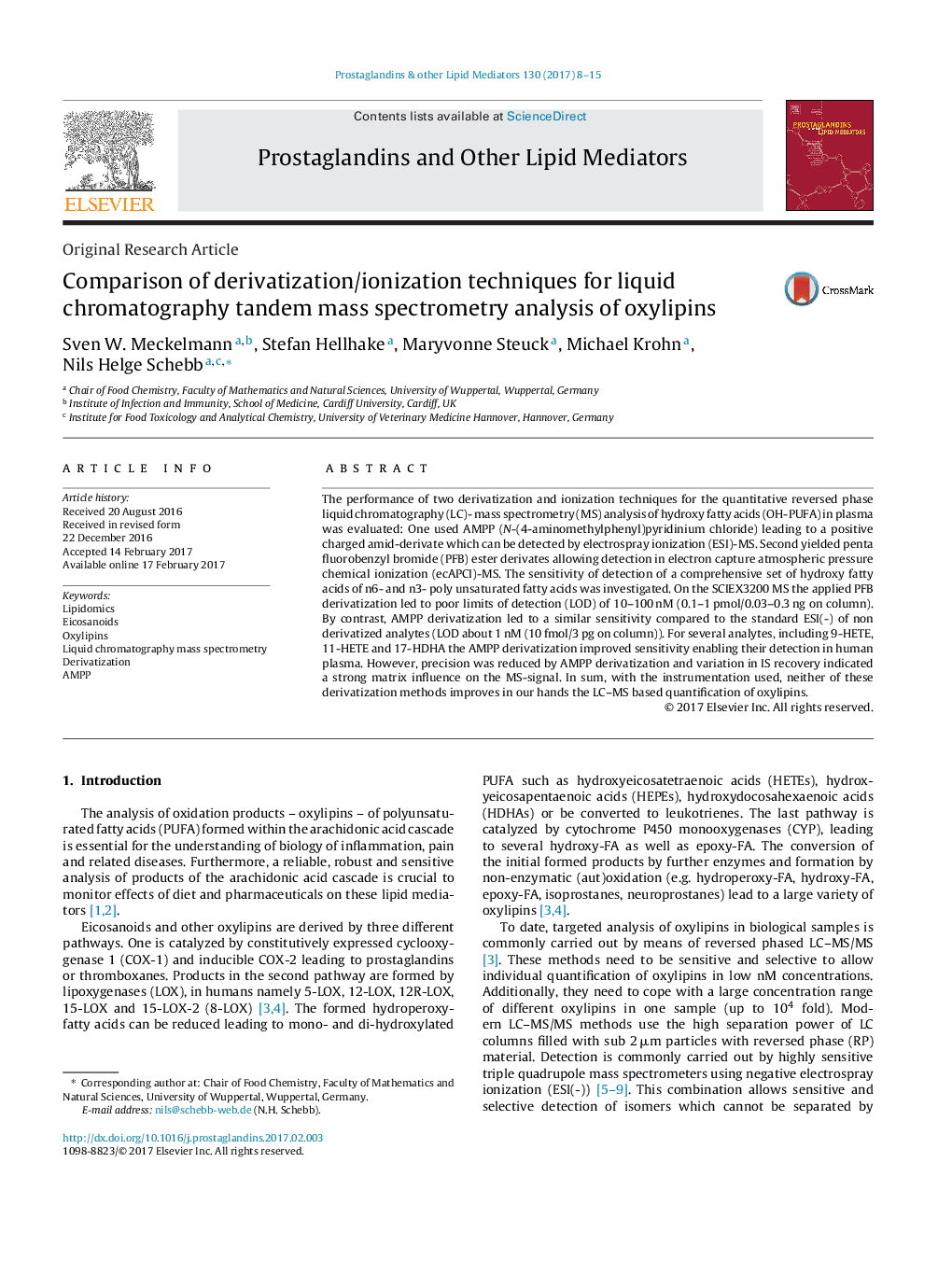| Article ID | Journal | Published Year | Pages | File Type |
|---|---|---|---|---|
| 5515913 | Prostaglandins & Other Lipid Mediators | 2017 | 8 Pages |
â¢The performance of two derivatization and ionization techniques for the quantitative RP-LC-MS of oxylipins were compared with direct ESI(-).â¢One used AMPP (N-(4-aminomethylphenyl)pyridinium chloride) leading to a positive charged amid-derivate which can be detected by electrospray ionization (ESI)-MS.â¢Second yielded penta fluorobenzyl bromide (PFB) ester derivates allowing detection in electron capture atmospheric pressure chemical ionization (ecAPCI)-MS.â¢On the SCIEX3200 MS PFB derivatization led to low sensitivity. AMPP derivatization led to a similar sensitivity compared to the standard ESI(-) of non derivatized analytes.
The performance of two derivatization and ionization techniques for the quantitative reversed phase liquid chromatography (LC)- mass spectrometry (MS) analysis of hydroxy fatty acids (OH-PUFA) in plasma was evaluated: One used AMPP (N-(4-aminomethylphenyl)pyridinium chloride) leading to a positive charged amid-derivate which can be detected by electrospray ionization (ESI)-MS. Second yielded penta fluorobenzyl bromide (PFB) ester derivates allowing detection in electron capture atmospheric pressure chemical ionization (ecAPCI)-MS. The sensitivity of detection of a comprehensive set of hydroxy fatty acids of n6- and n3- poly unsaturated fatty acids was investigated. On the SCIEX3200 MS the applied PFB derivatization led to poor limits of detection (LOD) of 10-100Â nM (0.1-1Â pmol/0.03-0.3Â ng on column). By contrast, AMPP derivatization led to a similar sensitivity compared to the standard ESI(-) of non derivatized analytes (LOD about 1Â nM (10Â fmol/3Â pg on column)). For several analytes, including 9-HETE, 11-HETE and 17-HDHA the AMPP derivatization improved sensitivity enabling their detection in human plasma. However, precision was reduced by AMPP derivatization and variation in IS recovery indicated a strong matrix influence on the MS-signal. In sum, with the instrumentation used, neither of these derivatization methods improves in our hands the LC-MS based quantification of oxylipins.
